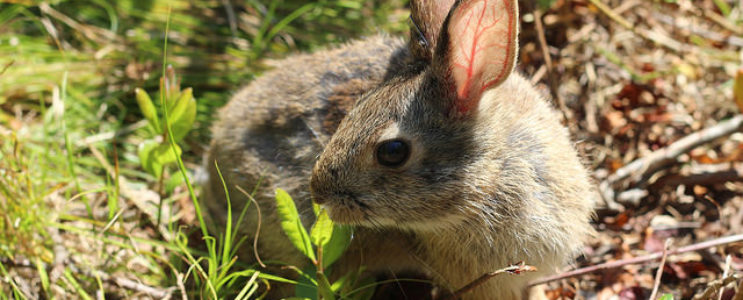Good News for Charlestown – Great Thicket National Wildlife Refuge Approved!
Press Release from US Department of Interior:
Nation’s Newest Wildlife Refuge Represents Coordinated Response to Conserving Key Shrubland Habitat in the Northeast
WASHINGTON, D.C. – Following an extensive public process, and with overwhelming public support, the U.S. Fish and Wildlife Service has finalized the creation of Great Thicket National Wildlife Refuge, dedicated to conserving and managing shrubland and young forests for wildlife in New England and eastern New York. The approval of the refuge marks a key step, enabling the Service to now work with willing and interested landowners to acquire land.
The nation’s newest wildlife refuge joins the largest network of lands in the nation dedicated to wildlife conservation, with 565 other national wildlife refuges – at least one refuge in every state – and other protected areas covering more than 150 million acres. A hundred years in the making, the refuge system is a network of habitats that benefits wildlife, provides unparalleled outdoor experiences for all Americans, and protects a healthy environment.
Since 2009, the Obama Administration has established 17 new national wildlife refuges, from the first urban refuge in the Southwest — Valle de Oro National Wildlife Refuge in New Mexico — to refuges that protect working lands and the important habitat of the tallgrass prairie of Kansas’ Flint Hills, the Dakota Grasslands, and the Everglades Headwaters.
“National wildlife refuges provide Americans with incredible opportunities to experience nature at its finest,” said Secretary of the Interior Sally Jewell. “Great Thicket National Wildlife Refuge will give New Englanders and New Yorkers the chance to conserve important habitat in the region, ensuring current and future generations can experience the rich variety of animals and plants that call these special places home.”
“The approval of Great Thicket National Wildlife Refuge marks a milestone in an exemplary partnership with six state wildlife agencies and a foundation for working with local governments and others to explore conservation opportunities,” said U.S. Fish and Wildlife Service Northeast Region Director Wendi Weber. “Interested landowners now have a unique opportunity to leave a legacy of conservation and to contribute to a large-scale effort that will make a difference for American woodcock, New England cottontails, monarch butterflies and other wildlife.”
Over the past century, many shrublands and young forests across the Northeast have been cleared for development or have grown into mature forests. As this habitat has disappeared, populations of more than 65 songbirds, mammals, reptiles, pollinators, and other wildlife that depend on it have fallen alarmingly.
Despite significant efforts by many agencies, organizations and landowners to manage existing lands, conservationists have determined that more permanently protected and managed land is needed to restore wildlife populations and return balance to northeast woodlands. Great Thicket NWR responds to that need to preserve and manage land to benefit shrubland-dependent wildlife, such as the ruffed grouse, golden-winged warbler, box and spotted turtles, whippoorwill, blue-winged warbler, and Hessel’s hairstreak.
A key step in the formation of the refuge was the completion of the land protection plan and environmental assessment. The Service made the draft plan available for public review in early 2016, resulting in more than 6,000 comments – over 90 percent of which were supportive.
Now that the plan has been approved, the agency can begin working with willing and interested landowners in 10 target areas of Connecticut, Maine, Massachusetts, New Hampshire, New York, and Rhode Island to acquire up to 15,000 acres through various methods, including conservation easements, donations or fee-title acquisition. Current refuge staff would manage all acquired lands within existing resources.
This process is expected to take decades, as the Service will work strictly with willing sellers only and depends on funding availability to make purchases. Lands within an acquisition boundary would not become part of the refuge unless their owners sell or donate them to the Service; the boundary has no impact on how landowners can use their land or to whom they can sell.
Wildlife refuges provide habitat for more than 2,100 types of birds, mammals, reptiles, amphibians, and fish, including more than 380 threatened or endangered plants or animals. Each year, millions of migrating birds use refuges as stops to rest and refuel on their journeys of thousands of miles between their summer and winter homes.
National wildlife refuges do not just provide a boost to wildlife. They are strong economic engines for local communities across the country and provide intrinsic value to all Americans. A 2013 national report, Banking on Nature, found that refuges pump $2.4 billion into the economy and support more than 35,000 jobs. They are also excellent venues to hunt, hike, bike, boat, observe wildlife and more.
The plan and all related documents – including all comments received and how they were addressed – are available at: http://www.fws.gov/northeast/refuges/planning/lpp/greatthicketLPP.html.
Direct links to more resources:
● Great Thicket NWR final Land Protection Plan and Environmental Assessment (final LPP/EA)
● 2-page Newsletter (PDF-526KB)
● Refuge Acquisition Focus Area maps
● Frequently Asked Questions about Refuge land acquisition (PDF-1.28MB)
● Landowner Interest Form
